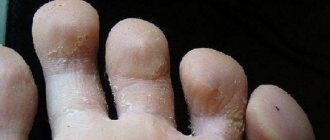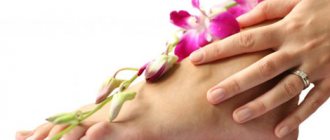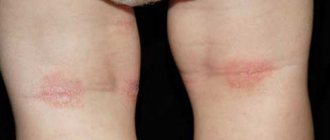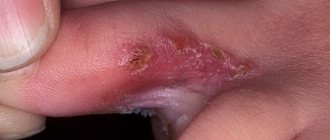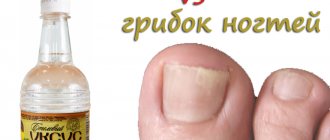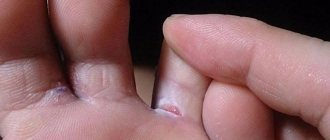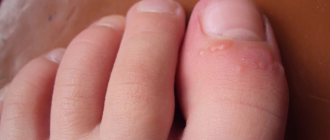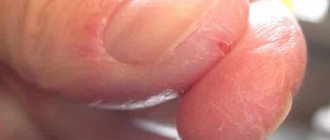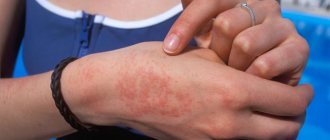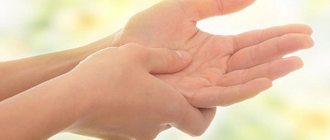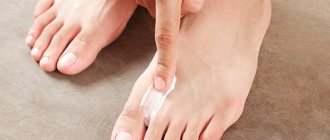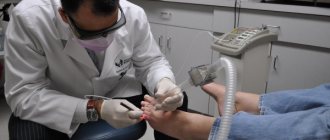Pathogen
The pathogenic beginning in this case is fungi, which parasitize mainly on the skin of your child’s feet. As a rule, there are several varieties among them:
- yeast;
- moldy
- genus Candida;
- dermatophytes.
Fungi love warm, moist and nutritious environments. Therefore, children's skin is the best suited for their rapid reproduction. The imperfection of the secretory function of the sweat glands, looseness, moisture, and tenderness of the skin and nails of children make it possible to capture more and more new territories.
From a sick adult, fungi are easily transmitted to a child through towels, nail scissors, and shared washcloths.
An advanced form of the disease can lead to more severe consequences - the fungus getting into other nearby areas, internal organs, and into the bloodstream.
Prevention
Fungus can be prevented by following the following rules:
- Wear only your own shoes in public places (sauna, bathhouse) and at home.
- Boots should be true to size and made from quality materials.
- After a walk, treat your child’s shoes with alcohol, dry and air them.
- Prevent viral diseases. This is facilitated by fortified nutrition, hardening, and exercises in the morning.
- Monitor the temperature of your feet, avoid excessive sweating, change socks when they get wet.
- When bathing, use antibacterial soap.
- After trimming a child's nails, treat scissors and clippers with alcohol.
- Pay attention to diseases in a timely manner and treat them.
Fungus is an unpleasant disease that is difficult to cure. If all prescribed measures are followed, the problem will be resolved faster, and the baby will return to a full life.
Causes
Doctors identify several factors that provoke the development of mycosis of the feet in children.
Internal:
- the presence of internal diseases of a chronic nature (diabetes mellitus, endocrine disorders, diseases of the gastrointestinal tract);
- increased genetic susceptibility to skin diseases;
- weakened immunity due to early age or frequent acute respiratory viral infections in the off-season;
- allergic reaction;
- hormonal changes in adolescents;
- flat feet;
- hyperhidrosis - pathological sweating of the feet;
- skin diseases;
- poor diet, lack of vitamins and minerals;
- frequent stress, depression.
External:
- damage to the skin of the legs due to injury (abrasions, scratches, cuts, abrasions, calluses);
- close contact with a person suffering from a fungal disease;
- the use of old, foreign, uncomfortable shoes made of synthetic and airtight materials;
- violations of personal hygiene rules (untimely cutting of nails, poor quality foot washing, insufficient washing of underwear and bed linen);
- prolonged or uncontrolled use of antibiotics and hormones;
- failure to comply with hygiene standards when visiting public playrooms and entertainment centers, as well as water parks and swimming pools (not wearing a change of clothes or your own socks);
- unsanitary or insufficient cleaning of bathrooms, floors and carpets in the house.
Causes of fungal infection in children
Fungus on a child’s feet appears due to:
- lack of personal hygiene: using other people's socks and slippers, walking in public places without protective equipment;
- incorrect shoes, chosen in the wrong size or made from low-quality materials;
- wounds on a child’s feet left without treatment;
- contact with a person suffering from a fungal infection.
Main symptoms
The manifestations of mycosis of the legs in children are not much different from the symptoms in adults, with the exception of the rapidity of development of the disease. Therefore, when you observe the first signs, start sounding the alarm.
Any manifestations of mycosis of the feet are characterized by:
- itching and redness;
- swelling;
- peeling in the form of scales or small plates;
- focal increase in temperature of the affected skin (inflammation);
- roughening and thickening of the skin;
- involvement in infection of the nail plate (onychomycosis);
- with insufficient or improper treatment, the appearance of bubbles, as well as the addition of suppuration.
Forms of fungus in children
Several types of illness in children have been identified.
Interdigital
One of the most common forms in childhood. It starts with a small wound between the fingers, which gets infected - the causative agent of mycosis.
"Athlete's foot"
It is characterized by peeling of the skin over the entire foot of the child. In infants, the plantar lines seem to be sprinkled with flour. The phenomenon is accompanied by itching.
Vesicular
The form is characterized by the appearance of blisters and ulcers on the surface of the foot. When they are opened, a secondary infection may enter.
Mixed
Combines several types of fungus. It often begins asymptomatically with damage to the skin between the toes.
Forms
Dermatologists distinguish several main forms of fungal infection of the feet in children.
- Interdigital. The main place of concentration of mycosis is the interdigital spaces. The skin between the 5th and 4th fingers suffers significantly (in babies they are very close to each other). The adjacent skin of the sole and nails may be affected. The skin becomes red, thickened, and dry. Children complain of constant itching and thin scales appear. Nails become brittle.
- Erased. Young children are often susceptible to this form. The symptoms are practically invisible. Only after a short period of time, the appearance of a rash, swelling, slight itching, cloudiness, layering and brittleness of the nail is observed.
- Vesicular. From the name you can understand that a vesicular rash occurs - vesicles containing pathogenic exudate. When scratched, the blisters burst, and the infectious fluid that spills out spreads the fungus to other areas of the skin. The vesicles may coalesce into larger blisters. When scratching, bacteria can enter the erosive surface and suppuration occurs. This form quickly becomes chronic and requires long-term treatment.
- A symptom of "athlete's foot", which changes the color of the nails from pale yellow to brown. A point forms along the edge of the nail, the plate curves and resembles a bird’s beak. The skin of the foot dries out, becomes rough, and a white powdery coating (like powder) appears, accompanied by itching.
We would like to note that children get mycosis of the feet faster than adults, and the course of the disease is not as pronounced and responds well to treatment.
Symptoms and forms of the disease
At the initial stage, athlete's foot looks like slight redness of the skin between the toes and on the feet.
Most often, the first symptoms can be noticed between the outer toes - the little toe and the one adjacent to it.
Experts identify the following forms of the disease with their characteristic clinical manifestations:
- Erased. Slight peeling of the epidermis between the outer toes.
- Squamous. The inflamed area becomes covered with scales and itches after moisturizing.
- Hyperkeratotic. Severe peeling, rashes in the form of blisters, plaques. At night there is severe itching and burning.
- Diaper-like. Redness, swelling, softening of the epidermis. The appearance of non-healing cracks and erosions that cause severe pain.
- Dyshidrotic. Weeping, blistered epidermis. Pronounced erosions are pink-red in color.
In its acute form, the disease causes fever and general weakness. A sharp, unpleasant odor emanates from the feet.
A bacterial infection penetrates into the skin affected by erosions and a purulent process develops.
IMPORTANT! Infectious lesions of the interdigital space are often accompanied by onychomycosis (nail fungus). In this case, the nail plate begins to change color, deform, thicken, and become brittle.
Diagnostics
Remember! If you suspect athlete's foot in a child, do not try to cure it yourself. Only a doctor can determine an accurate diagnosis. Consult your pediatrician or dermatologist as soon as possible. In addition, laboratory tests are of great importance.
Diagnosing a fungal infection is not easy even for an experienced specialist. A qualified examination of the patient includes:
- collecting anamnesis (manifestations, complaints, stage and form of the disease are clarified);
- referral for a blood test from a finger (from a vein);
- specific tests: scraping from a lesion on the skin or nail, culture of material, biopsy (if necessary).
In order for the research to be reliable, the patient will have to: from the evening of the previous day:
- do not smear the skin with any ointments, solutions or cosmetics;
- do not take tablets or use aerosols;
- do not cut or process nails;
- wash your feet with baby soap;
- if tests are expected, do not drink tea or eat in the morning.
Causes and symptoms of fungus
The first thing to consider is that some children are born more susceptible to yeast infections and are more likely to contract the disease than others.
The main provoking factors in this case are the following:
- heredity;
- structural features of the skin;
- diabetes;
- obesity.
Another important factor not related to direct infection with the fungus is the child’s immunity. If it is weakened due to illness or taking antibiotics, the risk of fungus increases.
Fungal infections also easily enter the body through wounds on the feet and even small cracks in the skin, so it is important to monitor this and treat it promptly.
You can become infected with a fungus:
- when wearing someone else's shoes;
- when using other people's manicure tools;
- if one of your relatives is sick at home;
- in bathhouses, locker rooms, swimming pools and even on the public beach;
- in case of non-compliance with personal hygiene rules.
The fungus “loves” darkness, dampness and lack of oxygen, so uncomfortable hot shoes can also provoke the development of the disease.
Children, especially small ones, do not pay attention to such trifles, so parents need to be especially attentive. It is not so difficult to determine mycosis of the feet in a child; the disease manifests itself not only in the external condition of the feet, toes and nails, but also in the child’s behavior.
When to see a doctor
You should consult a doctor if you notice the following signs:
- peeling of the skin, especially between the fingers;
- change in the color and thickness of nails;
- the appearance of blisters on the feet;
- child's complaints of itching;
- restless behavior, tearfulness;
- loss of appetite.
In newborns, the risk of developing mycosis is minimal, but hygiene should not be neglected - the folds of skin on the feet are a favorable place for the accumulation of bacteria.
Treatment
Antimycotic therapy is primarily aimed at removing the main cause of the disease - getting rid of pathogenic flora. At best, its complete elimination, at worst, transfer to a state of remission and relief of unpleasant symptoms.
An integrated approach is required. In this situation, you need to take restorative, antiallergic, antipruritic drugs.
Antimycotics
The destruction of the fungus is facilitated by the local use of broad-spectrum antifungal drugs in the form of ointments, aerosols, creams and solutions, but mainly for children over two years of age.
- Pimafucin. A wonderful drug that quickly relieves symptoms and kills any fungi outright. Twice a day for a month, the ointment should be gently rubbed in a thin layer onto clean, towel-dried feet.
- Terbinafine. An ointment, cream or spray is more suitable for a child. It will relieve rashes, itching and redness within a week after rubbing it into the skin twice daily.
- Clotrimazole. Has a softer effect. It is used in the form of ointment, lotion, aerosol and cream. The child is applied three times a day, but the treatment will last for a month and at least another 21 days after the course has been completed.
- Mycostop. The spray forms lasting protection and disinfection against fungus not only of the foot, but also of shoes. It is easy to apply, but at the same time it is not the main drug in the treatment of onychomycosis.
- Diflucan. The active substance is fluconazole. In powder form for preparing a suspension, it is well suited for children under 2 years of age and is administered orally. The doctor calculates the dose according to the weight and age of the child.
The following are often used as adjuvant therapy:
- Antipruritic and antiallergic: suprastin, diazolin, pipolfen.
- Antibacterial: if mycosis is complicated by a bacterial infection - antibiotics and antiseptics.
- General strengthening: multivitamins, rosehip syrup, herbal teas, herbal infusions and decoctions internally and externally.
Folk remedies
In order to achieve a speedy recovery, traditional medicine recommends not to disdain proven folk methods.
Here, all kinds of solutions from simple products, decoctions and infusions with medicinal plants are used, which have a disinfecting and antimycotic effect.
- Baking soda and table salt. At the rate of one and a half liters of warm water (450C), take 1 tablespoon of bulk. Stir thoroughly and lower the legs into a basin for 10-15 minutes. Then rinse them with plain water and wipe dry. We do the procedure once every day until cure.
- Vinegar. First, treat clean cotton socks with a solution of 1 glass of vinegar and 1 liter of water and dry them. Before taking a bath, wash your feet thoroughly without soap. Pour approximately 2 liters of water and 2 cups of vinegar into the container. Soak your feet in the liquid for 5 minutes without rinsing, wipe off and put on socks at night. We repeat the manipulation for up to two weeks.
- Mint with salt. Rinse fresh mint (50-70g) collected from your own front garden or flower garden under running water. Place on a towel to dry. Finely chop on a wooden board with a sharp knife. In a ceramic bowl, combine with 1 teaspoon of salt and rub with a spoon or pusher. Gently distribute the resulting mixture between your fingers for 1 hour. Let's wash off the grass and dry our feet. We carry out the procedure at least 3 times a week until recovery.
- Pharmaceutical chamomile and calendula. An infusion is prepared from the flowers of dried plants purchased at the pharmacy. To prepare, pour 1 tablespoon of sushi into a liter clean jar. Pour boiling water up to the neck, close the lid and wrap for 20-30 minutes. Strain the infusion and dilute it with a liter of warm water for a bath. Lower your feet for 15-20 minutes. Wipe and treat with ointment. We make the infusion fresh every time! We continue treatment for 2-3 weeks.
Traditional treatment
You can eliminate the symptoms of the disease using traditional medicine recipes. Before starting medical procedures, you must consult your doctor regarding the effectiveness of a particular prescription, the presence of side effects and contraindications.
You can cure fungus on children's toes using various baths:
- Steam the legs in a decoction of milkweed - pour a glass of boiling water over a spoonful of raw materials, keep in a water bath for 5 minutes, cool, dilute with 2 liters of water, and begin the procedure;
- Immerse the foot in a decoction of wormwood for 10 minutes - 2 tablespoons of herb per 1 liter of water, boil the mixture over low heat for 20 minutes (the bath helps eliminate itching and relieve inflammation);
- Steam your feet in brewed coffee three times a day, after 2 weeks the symptoms of the fungus will disappear.
Ingredients for folk antifungal remedies
Effective compresses and ointments
To cure a child’s fingers from a fungal infection, it is necessary to make medicinal compresses daily from onion or garlic pulp, grinding the heads and mixing the raw material with sunflower oil in equal proportions. Rub the peeling areas before going to bed, duration of therapy is 2 weeks.
If the fungus bothers the baby at night, then there is an effective method to eliminate the itching - rub the feet with salicylic ointment, and then wrap the feet with polyethylene and put on a warm sock on top. In the morning, remove the compress.
Treatment with soda
This cheap and affordable remedy will help get rid of the fungus once and for all. It is enough to dilute a tablespoon of powder with a small amount of water until a creamy consistency is obtained, then apply a generous layer to the interdigital areas, damaged skin, and nails.
After 10 minutes, rinse with warm water and wipe your feet dry with a towel. Treat with additional powder or cornstarch. The duration of therapy is 2 weeks; after a week of break, the procedure can be repeated.
We advise
The diet of a patient with fungal diseases should contain foods rich in vitamins and microelements:
- boiled and stewed vegetables;
- lean meats, fish and poultry;
- milk, yogurt, cottage cheese, kefir;
- vegetable oils;
- garlic, onion, herbs;
- fruits.
With caution (it is better to refuse altogether) you can eat sweets, soda, citrus fruits, coffee, chocolate, baked goods and flour dishes, as well as spicy, salty and smoked foods.
Traditional methods of treating mycosis in children
To cure foot fungus in children using the folk method, the following 3 methods are most often used:
- wormwood decoction. To prepare it, you need to purchase half a kilogram of herb, which should be placed in a bowl with 3 liters of water. After the ingredients have been steamed for 25 minutes, the liquid should cool to an acceptable temperature so that the child can steam his feet;
- foot bath using soap and soda water with the addition of garlic gruel;
- milkweed grass. In this case, the child soaks his feet for no more than 15 minutes in a warm bath, to which is added 1.5 cups of herbs, poured with 200 ml of boiling water.
fungus between a child's toes
or in any other enclosed space where a child is not allowed to be a child. I'll share how we had fun in the hospital in between being scolded by the nurses for running around the infectious disease ward.
1. Tablet
This is evil, but at the end of 2 days of lying on the beds, even the most principled mothers gave up and handed their children phones and tablets. I'm not an exception. And in general, I declare Apple the official sponsor of my healthy bladder and washed hair, and many, many other procedures performed for my child.
What to upload?
Drawing pad
https://itunes.apple.com/us/app/drawing-pad/id358207332?mt=8
Look at how many different drawing tools there are - the marks turn out very realistic.
Paint my wings Toca Boca
https://itunes.apple.com/ru/app/paint-my-wings/id432858701?mt=8
I need to paint a butterfly. You draw on one wing, the pattern is repeated automatically on the second. If you poke your finger in the tummy, the butterfly says that it is ticklish.
Zoola animals
https://itunes.apple.com/us/app/zoola-animals-deluxe-animal/id639182249?mt=8
A stupid but funny application - you need to feed the animal, dress it and entertain its baby. Oh yes, to pleasant classical music. Why not?
Animals 100 Lite
https://itunes.apple.com/ru/app/animals-100-lite-real-animals/id409813137?mt=8
An excellent encyclopedia: beautiful photos from different angles, voices, brief information about hundreds of animals. What more could you want?
Puzzles
You can download almost anything. Start with those where you need to find the appropriate silhouette. We have this one: https://itunes.apple.com/ru/app/wood-puzzle-hd/id381583071?mt=8
Musical instruments
Garage band
https://itunes.apple.com/ru/app/garageband/id408709785?mt=8
Keyboards, drums, guitars - anything with a fairly naturalistic sound.
Lego Duplo
https://www.lego.com/en-us/duplo/apps
I'm ready to sing odes to this application. If you download only this one, you don’t have to look for the rest. A semi-cartoon-play game, after which my daughter will definitely want to play with real Lego. Graphics and sound are top notch. Nothing flickers or irritates. I really like that there are no speed tasks and everything is intuitive; if it’s not clear, a hint appears. In the Forest application, you can start from any level. In the Cafe app, place the sandwiches in the correct order. In Little Engine - build a railway.
To preface the questions, I don’t know if these games are available for Android. Let this be a guide. If you have any hit games, please share them in the comments.
How else can you have fun using gadgets?
What child doesn't like to make a video about himself
? In the intervals between procedures, we recorded action-packed videos “The Mystery of the Closed Closet”, “Living Blanket”, “Dance as if no one is looking at you”, etc., and during the procedures, while the nurse slowly injected half a liter of medicine into the catheter, we revised.
Another way to play with gadgets is to turn on the selfie camera
and poke the bunny/cat directly at it so as not to cover the screen. A huge eye or nose appears on the screen. Very entertaining.
Turn on the flashlight and show a shadow theater
on the wall. Along the way, we can recall the fairy tale “Aunt Zinnia and the Bogeyman” or “The Gruffalo’s Daughter.”
Another game with a flashlight
2. Word games.
The view from the window of the ward is quite depressing: an endless gray fence and red panties on the balcony of the grandfather from the five-story building opposite. But you can also get some benefit out of this.
We love playing I-Spy
.
I look at something gray, metallic, with wheels, but it is not a car. Starts with M. Trash bin! Right!
I look at such a box that hangs outside under the window, which changes the weather inside the house. Starts with K. Air conditioning!
I wrote this very cleverly. More often, the game begins with a well-known answer: “Mom-mama, wish me asphalt!”
Another type of game
, however, we haven’t played yet: name as many objects as possible with 1 given characteristic: wooden, smelly, soft, warm, hard, moving, etc. Aerobatics is the same thing, with a specific letter. Here is a wonderful pinwheel, you can print it out, attach an arrow and breathe new life into looking at Wimmelbooks.
Another verbal word that has recently been in demand among us is rhyming.
. “Dad wanted to fry a frying pan, but he fried his beard,” “I have a hammer, but a fungus grows in the forest.”
Broken phone
. In our case (there are only two players) this is a type of rhyming, you just need to say the word in your ear in a whisper and specifically hear “not that”: egg-face-porch, and when the rhymes end, the words “bubu-” invented on the fly are used. go", "ma-tsa-tso". One day of our stay in the hospital was completely devoted to a word game based on a poem about “Mr. Tweedledee” - tweedled hands, Tweedled Mouse, trawled bed, etc.
Impromptu fairy tales,
for example, about brave animals who are not afraid of injections. Even the nurses have already picked up on the frog that flew into space.
3. Homemade toys
Usually, for the courage shown during injections, a person receives Kinder. For some reason, what my child loves most about Kinder is not the toys, but the capsules. With the help of felt-tip pens we turn them into minions, chickens, owls, piglets, etc.
From the “tails” from tea bags we made an excellent cat and mouse.
From a syringe - a bottle for feeding toys, and also a whistle.
From cups - cat and mice
From a mask and 2 bottles - a hammock or swing.
The tangerines got it too.
4. Homemade costumes
If you put spare tights on your head, you will get a cute long-eared bunny. If you twist the legs into bagels, you get a bear/mouse/lamb.
If you throw a towel over your shoulders, you get a swallow/owl/butterfly. If you wrap a child in a blanket, he immediately turns into a caterpillar, which must immediately hatch.
If you tuck a bag into leggings, you get a bushy-tailed fox or squirrel.
5. Drawing
What else to draw besides traditional sun houses?
Kalyaki-malyaki
. Thanks to Herve Tulle, my daughter considers them almost living characters. While we were drawing, the girl from the next bed spied and immediately portrayed to her surprised mother “a lollipop with cotton candy hair.”
Complete the fairy tale
More details here
You can also draw incredible animals
based on the chameleon.
Riddles very timely
.
Here's another good link: drawings-riddles from childhood.
Modeling
One mother took a jar of Play Do for her child to the hospital. It happens. I didn’t know, otherwise I would have taken it too. The child played for 3 minutes and that’s it. I suspect mom didn’t read my post about sculpting with kids. I'm modest, yes.
The other girl’s dad made a mistake and sent ordinary plasticine to the hospital. The child made a great rainbow unicorn, and mom spent a long time picking out the rainbow from the bed linen :)
6. Outdoor games
No matter how much we zombie with a tablet or books, at some point the child will rebel and want to move in his usual rhythm. Here are a couple of games for which a meter by meter space is enough.
Day Night
"Day!" The child runs in circles, jumps, frolics. "Night!" The child runs to his mother's arms and hugs.
Jellyfish
We throw a thin T-shirt package into the air and make sure it doesn’t fall: we blow, we wave, we throw it up with our arms and legs.
Hot potatoes, snowballs, football
- you can come up with a lot of things with a crumpled paper napkin. The worst thing that can happen is that your roommate gets into her roommate's cup of tea. We didn't get it.
Charger
based on Eric Carle. We remember any animal and act out the dialogue “weakly”: “I am a penguin. I can move my neck like that. Can you do that? I am a bison. I raise my shoulders like this. Can you do that?”
The main thing to remember is that the exercises are given in sequence from top to bottom: neck-shoulders-arms-back-legs-toes - and nothing else.
Disco
Dancing is our No. 1 physical activity, after which the child clears his throat well. Here is a selection of my daughter's favorite clips. True, for the last week she has been dancing only to Jason Derulo’s live concert on MTV.
It seems to me that I have everything. Good health and fun games to all of us!
More improvised games on the topic.
UPD: I remembered another game from the hospital - we resurrected long-forgotten finger games. My favorite was this one: I will spread the bread with butter (pat it on the handle), then with jam, then with honey, and then...MUSTARD!!! (we tap the handle with our nails, and the child quickly hides it).
Symptoms of onychomycosis
Changes in the thickness of the nail plate can occur as follows:
- Hypertrophy. At the same time, the nail thickens and, as it were, rises from its bed. The thickening is usually uneven on the big fingers and even on the little fingers (due to the small area of the nail).
- Atrophy. Atrophy indicates a serious malnutrition of the nail and is characterized by its thinning.
Main symptoms of onychomycosis
| Symptom | Characteristic type of lesion | Short description | Image (example) |
| Changing nail color | Total dystrophy | The color is changed evenly, without pronounced spots. Damage to the entire surface of the plate is observed, often with growth disturbances. The color depends on the type of pathogen. | |
| Nail surface roughness | Surface white form | Roughness is determined visually and by touch. It occurs due to superficial destruction of the plate and gradual deepening of defects. | |
| Dehiscence of the nail plate | Distal-lateral subungual form | The separation begins from the free edge of the nail and occurs gradually. The area of detachment may increase over time. | |
| White spots under the nail plate | Proximal subungual form | Such spots can be caused by the nail peeling off at its base. During the growth process, a cavity forms between the plate and the underlying tissue, which looks like a white spot. | |
| Loss of shine in nails (dullness) | Present in various forms of fungal infection | The surface of the nail plate gradually loses its shine. In this case, there are no visible defects on its surface. The topmost thin layer (skin) containing fats and water peels off. | |
| Increased burr formation | Distal-lateral subungual form | The causative agent of the disease also affects the skin around the nail. In this case, more rapid necrosis of the skin along the edge of the nail occurs, which begins to come off in the form of white or yellowish burrs. | |
| Detachment of the nail plate | Proximal subungual form, less often – total dystrophy | Occurs due to disturbances in the growth zone. The plate may not change color much. The peeling occurs evenly, starting from the root of the nail and spreading as it grows. | |
| Peeling of the skin of the feet and hands | With concomitant fungal skin infections | The epidermis contains a layer containing a significant amount of keratin. Some types of fungi can affect it at the same time as the nails. The skin peels off in the form of small scales. | |
| Severe destruction of the nail (onycholysis) | Total dystrophy | The nail plate is destroyed due to the growth of a fungal colony into its thickness while simultaneously damaging the growth zone. Sooner or later it is observed in almost all patients without specific treatment for onychomycosis. | |
| Crumbs on the surface of the nail | Surface white form | The fungus destroys the surface of the nail plate, causing it to begin to crumble. Over time, small defects appear in the form of depressions. |
Differences between the disease in adults and children
Nail fungus in children develops in the same way as in adults. The main difference is how it is formed and treated. In children, the appearance of mycosis usually signals the presence of other pathogenic processes. If the disease appears, you need to pay attention to your general health and the functioning of your immune system.
Treatment of nail fungus in children will also have a lot of nuances. This is due to the fact that the child’s low weight and the sensitivity of his body do not allow the use of a number of medications. A similar problem arises in adolescents, as their body is in a state of hormonal changes. Not every medicine is suitable if mycosis appears in a child.
If you use the wrong medications, side effects are likely to occur. You may feel unwell and have skin problems. Allergic reactions are common.
Fungus prevention
These measures to prevent fungus are the same for both children and adults. That's why:
- It is not recommended to wear other people's clothes, shoes, socks, etc.
- Each child should have his own set of various accessories, for example, manicure.
- Watch out for sweaty feet.
- Shoes should be true to size; it is recommended to buy them from “breathable” material.
- Shoes should be constantly treated with antifungal agents.
- You need to wash your feet constantly.
- If various signs of a violation of the integrity of the skin and deformation of the nail plate appear, you should immediately consult a doctor.
Despite the fact that the treatment process is much better in children than in adults, this does not mean that time should be neglected. Only prevention and timely examinations will help the child recover as quickly as possible.
Features of treatment and possible contraindications
Of course, the greatest effect is brought by those products that are intended for internal use. But this type may not always be beneficial due to the age of the baby.
For example, if in an older child (teenager) the choice of funds may be limited by certain contraindications or due to individual qualities, then in infants everything is much more complicated:
- Treatment is contraindicated before the age of two years. We are talking specifically about systemic therapy, which includes various drugs for internal and external use.
- For a child under two years of age, only maintenance therapy is provided.
- Medicines can harm the baby much more than the fungal infection itself.
